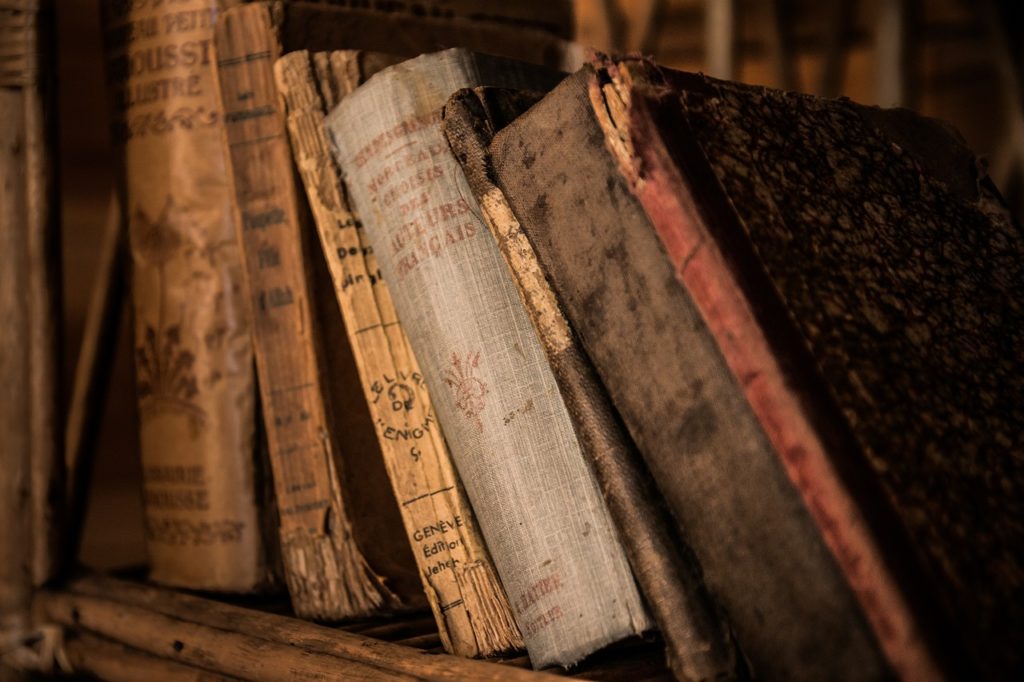
Engin_Akyurt / Pixabay
Is today (January 28, 2016) closer to
A) January 27, 2016
or
B) January 28, 1986?
The obvious answer is A), because we almost always think of time as sequential, but for the friends and family of the five astronauts and two payload specialists that died in the Space Shuttle Challenger disaster on this date in 1986, the answer would likely be B). 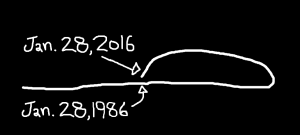
In 1986, I watched the launch of the Challenger with my grade eight and nine students. We watched for a few hours after as we tried to understand how this could have happened. This was a meaningful event. Chronologically, yesterday is closer to today, but if meaning is our standard, at least for some people, today is closer to this date 30 years ago than was yesterday.
The Non-sequential Nature of Time
The non-sequential nature of time is something we usually ignore, but it can add significant depth and experience to our lives if we are more aware of it. I’ll attempt to illustrate this using the elements of Tim Keller’s sermon called “The Story of the Lamb.”
The story of the Lamb is actually the story of three lambs.
The Story of the Second Lamb
The story of the second lamb cam be found in the book of Exodus. The Israelites are slaves in Egypt and as prologue to releasing his people, God has sent nine plagues upon the land of Egypt. The tenth plague will be the death of the first born. In Exodus 12:23 we an amazing twist in time:
When the LORD goes through the land to strike down the Egyptians, he will see the blood on the top and sides of the door frame and will pass over that doorway, and he will not permit the destroyer to enter your houses and strike you down.
The Destroyer. This destroyer does not bring regular destruction, but End-Times destruction–Revelation 9:11:
And they had a king over them, which is the angel of the bottomless pit, whose name in the Hebrew tongue is Abaddon, but in the Greek tongue hath his name Apollyon.
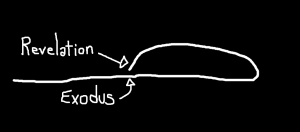 This Destroyer, then, who visits death upon all the first born of Egypt is the bringer of End-of Time Judgement, long before the end of time. Time is bent when the Destroyer of the future kills all the first born in ancient Egypt who were unprotected by the blood of the second lamb.
This Destroyer, then, who visits death upon all the first born of Egypt is the bringer of End-of Time Judgement, long before the end of time. Time is bent when the Destroyer of the future kills all the first born in ancient Egypt who were unprotected by the blood of the second lamb.
Importantly, the tenth plague is not just the death of the first born Egyptians, but the first born of any who live in Egypt–this includes the Hebrews. The Hebrews are not exempt from Eternal Destruction–they are not saved by their own merit, nor by God’s ignoring of their sin. They are saved by the blood of the lamb. The Passover is the central act of Jewish worship – and it commemorates salvation by “the bloody death of a helpless victim”–the second lamb.
The Story of the First Lamb
The first lamb is found in Genesis 22. God says to Abraham,
Take your son, your only son, whom you love—Isaac—and go to the region of Moriah. Sacrifice him there as a burnt offering on a mountain I will show you. (22:2)
In this culture, the first born already belonged to God; he has a claim on the first born as representative of the family(Exodus 22, Numbers 3 and 8)–the firstborn’s life is forfeit.
You must give me the firstborn of your sons. Do the same with your cattle and your sheep. Let them stay with their mothers for seven days, but give them to me on the eighth day. (Exodus 22:29-30)
The first born, as the representative of the family, bore the guilt of the entire family. Abraham, Keller says, believed that God was just calling in the debt. Although the father would have been distressed by the loss of his son, sacrificing Isaac was also an act of giving God his due. Just before Abraham can carry out the sacrifice, angel of the Lord calls out “Stop.” Then this:
Abraham looked up and there in a thicket he saw a ram[a] caught by its horns. He went over and took the ram and sacrificed it as a burnt offering instead of his son. (Genesis 22:13)
God himself provided the alternate sacrifice. The ram functions as a substitute for the first born who is himself a representative of Abraham’s family.
Back to the Second Lamb
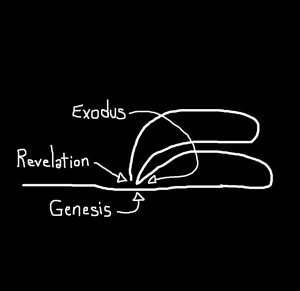 Back to the second lamb. In the Exodus story, the Hebrews understood that God was, again, making a claims the on the debt of the first born, and that he, again, provided an alternate. When they heard God’s instructions for the first Passover, they would likely make the connection to the first lamb–the ram caught in the thicket which took the place of Isaac on the alter. The story of the second lamb doesn’t mean what it means without the story of the first lamb. Again, time is bent back upon itself.
Back to the second lamb. In the Exodus story, the Hebrews understood that God was, again, making a claims the on the debt of the first born, and that he, again, provided an alternate. When they heard God’s instructions for the first Passover, they would likely make the connection to the first lamb–the ram caught in the thicket which took the place of Isaac on the alter. The story of the second lamb doesn’t mean what it means without the story of the first lamb. Again, time is bent back upon itself.
The deliverance from Egypt wasn’t the solution to all their problems–they still lived in a spiritual bondage, and consequently were subject to Final Judgement. To solve this problem, they need another lamb–Lamb 3, Jesus. John the Baptist called him “The Lamb of God who takes away the sin of the world!”
The Story of the Third Lamb
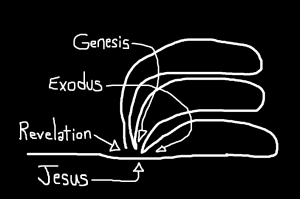 The night Jesus was arrested, he ate the Passover meal with his disciples. This night, the lamb wasn’t on the table, but at the table. The first two lambs were just animals. The ram that took Isaac’s place on the alter did not actually save the boy. Nor did the Passover lambs save the Hebrews by their death. The first two lambs only pointed to the third. The third lamb was the God’s Son, but this time no one yelled, “Stop.” Like the first two lambs, his death was in the stead of those who deserved it. Unlike the first two lambs, Jesus is the ultimate lamb that provides the ultimate salvation.
The night Jesus was arrested, he ate the Passover meal with his disciples. This night, the lamb wasn’t on the table, but at the table. The first two lambs were just animals. The ram that took Isaac’s place on the alter did not actually save the boy. Nor did the Passover lambs save the Hebrews by their death. The first two lambs only pointed to the third. The third lamb was the God’s Son, but this time no one yelled, “Stop.” Like the first two lambs, his death was in the stead of those who deserved it. Unlike the first two lambs, Jesus is the ultimate lamb that provides the ultimate salvation.
Communion
The central act of Christian worship, Communion, commemorates “the bloody death of an innocent victim.” The bread and the wine in which Christians partake an obedient response to Jesus command to “do this in remembrance of me.” In it we remember Jesus, the Lamb of God, giving his life for us, once and for all, on the cross.
Christians have different views as to what happens at communion, from the supernatural event of transubstantiation to it being a completely human act or “just a symbol.” If we think of time only as sequence, the Passover and the Last Supper happened many, many centuries ago. If they are relevant at all, they are relevant only as a symbol. If you understand that time has loops, it becomes far more than a mere symbol.
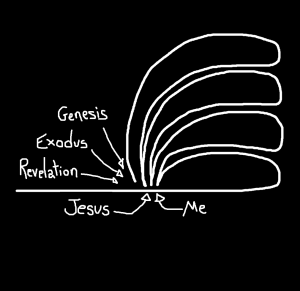 When we partake of the bread and wine, we are not simply remembering an event that took place 2000 years ago. We are standing at the convergence of several events, profound events each involving a substitutionary death.
When we partake of the bread and wine, we are not simply remembering an event that took place 2000 years ago. We are standing at the convergence of several events, profound events each involving a substitutionary death.
Jesus died once for all, but as time bends, we stand before him as he says the words “this is my body, for you.” Communion is not merely a memorial because Jesus is active as he offers us the bread and wine–his body, not many times, but once. But with the bending of time, he’s offering it now. One death and resurrection, but a continual offering of Grace.
As you partake of the Communion meal this weekend, think about the nearness in time, higher time, of the ram that took Isaac’s place on the alter, the Passover lambs that died in order to protect the Hebrews from an early encounter with The Destroyer of The End-Times. Think especially about the Lamb of God–the ultimate lamb–who died to save us from the ultimate consequences of our sin and who is right now seated on the throne of heaven. Think about standing at the convergence of all the Communion meals being celebrated across space and time as Jesus offers us the salvation he paid for with his life.
If you manage to catch just a glimpse of any of this, you will not be able to think of The Lord’s Supper as “just a symbol.”

